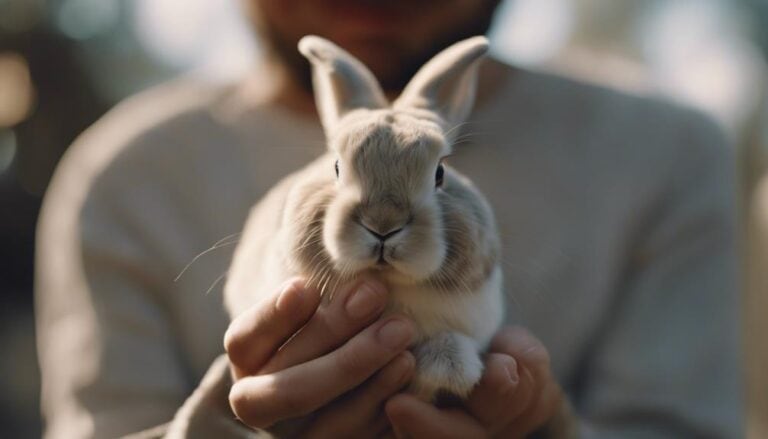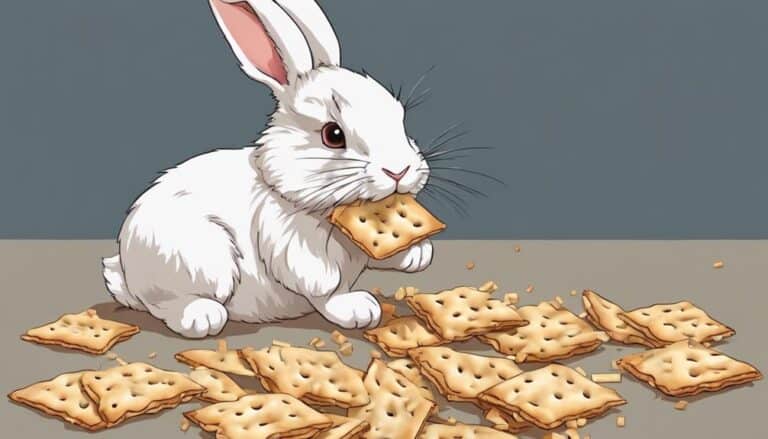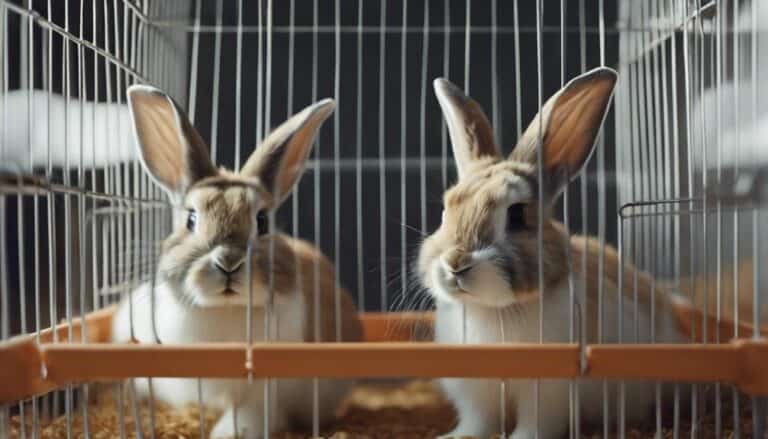Contents
- 1 Key Takeaways
- 2 The Science Behind Bunny Yawns
- 3 Common Bunny Yawning Myths Debunked
- 4 How to Recognize a Bunny Yawn
- 5 The Frequency of Bunny Yawns
- 6 Do Bunnies Yawn for Attention?
- 7 Yawning as a Sign of Bunny Emotions
- 8 Health Implications of Bunny Yawning
- 9 Captivating Bunny Yawn Videos
- 10 Understanding Bunny Yawns: Final Thoughts
- 11 Is Yawning a Sign of Eye Color Change in Bunnies?
- 12 Frequently Asked Questions
- 13 Conclusion
Key Takeaways
- Bunny yawns are natural physiological responses for oxygen intake and body temperature regulation.
- Yawning in rabbits reflects emotional states like relaxation, contentment, and alertness.
- Observing bunny yawning patterns aids in understanding their needs and well-being.
- Yawning frequency varies among rabbits based on health, comfort, breed, and age.
The Science Behind Bunny Yawns
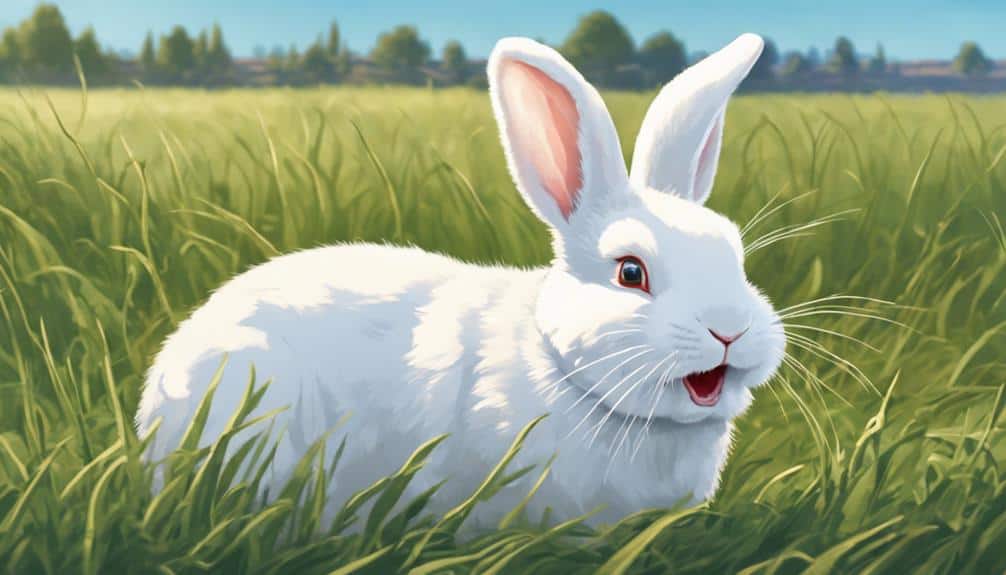
Common Bunny Yawning Myths Debunked
Revealing the truth behind common misconceptions about bunny yawning exposes a natural behavior essential for rabbits’ well-being. Yawning misconceptions often lead to misunderstandings about bunny behavior. Contrary to popular belief, bunnies do yawn, and these yawns aren’t signs of aggression or illness. In fact, yawn frequency in rabbits is a normal part of their communication. Understanding this aspect of bunny behavior can help owners better interpret their pets’ needs and emotions. Yawning myths can sometimes hinder rabbit bonding, as these misunderstood gestures may be misinterpreted. By debunking these myths, rabbit owners can develop a deeper connection with their furry companions. Remember, bunny yawns serve a purpose similar to human yawning, aiding in muscle stretching and oxygen regulation. Appreciating and acknowledging this behavior can enhance the relationship between rabbits and their caregivers.How to Recognize a Bunny Yawn
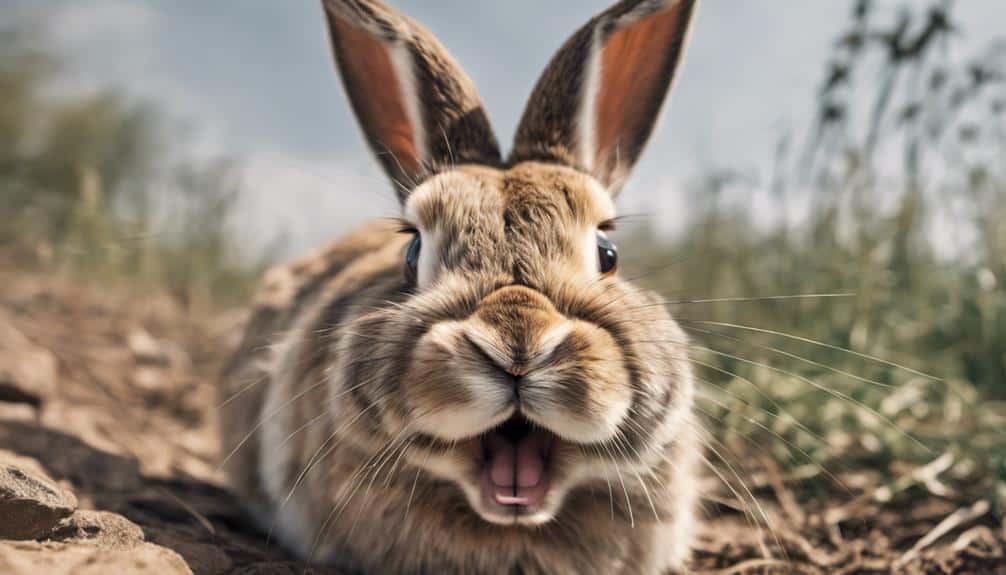
Yawning Behavior in Bunnies
Observing a bunny’s yawn can be an enlightening experience, as they display distinctive behaviors such as pitter-pattering their feet together. When it comes to yawning behavior in bunnies, here are some key points to take into account:- Yawning patterns: Bunnies exhibit specific behaviors before and during a yawn, such as the cute act of pitter-pattering their feet together.
- Yawn behavior: The yawn is a common occurrence among rabbits, revealing a different side of their behavior that can range from adorable stretches to slightly creepy wide-mouthed yawns.
- Yawn frequency: Bunny yawns are a familiar sight for those who own rabbits, showcasing a unique and charming aspect of their behavior.
Signs of Bunny Yawn
To identify a bunny yawn, observe the distinctive behavior of pitter-pattering their feet together before the onset of the yawn. This unique pattern of behavior serves as a behavioral cue indicating an impending yawn in rabbits. Additionally, during a yawn, bunnies may stretch their bodies, often revealing their teeth in a slightly unsettling manner. The frequency of bunny yawns can vary, with some rabbits yawning more frequently than others. It’s vital for bunny owners to pay attention to these yawning patterns and behavioral cues to better understand their pets’ needs and well-being. By recognizing these signs, you can develop a closer bond with your bunny and make sure they’re happy and healthy.The Frequency of Bunny Yawns
Frequent yawning in bunnies serves as an important physiological mechanism for regulating their body functions. Bunnies yawn frequently throughout the day, especially during periods of relaxation and before sleeping. This natural behavior helps them to regulate their body temperature and oxygen intake, ensuring their well-being. The frequency of bunny yawns can vary depending on the individual rabbit, their age, and their environment.- Yawning frequency variations: Some bunnies may yawn more frequently than others, indicating potential differences in their health or comfort levels.
- Yawning in different breeds: Certain bunny breeds may exhibit unique yawning patterns, showcasing the diversity of behaviors within the rabbit population.
- Yawning during playtime: Young bunnies tend to yawn more often as they spend energy playing and exploring, emphasizing the connection between physical activity and yawning behavior.
Do Bunnies Yawn for Attention?
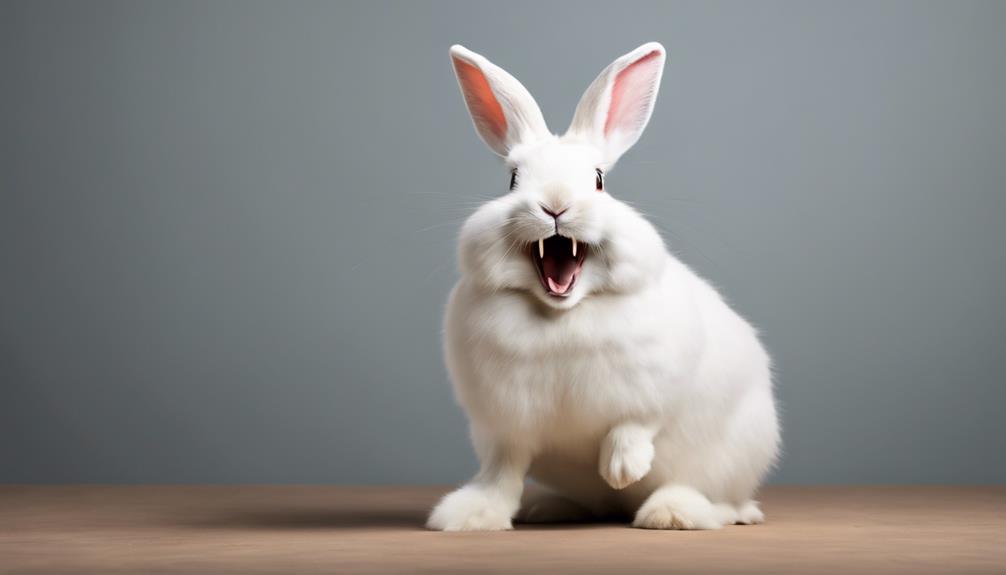
| Yawning Misconceptions | Attention Seeking Yawns | Yawn Frequency | Fatigue Indicator | Bunny Behavior |
|---|---|---|---|---|
| Yawning in bunnies not just for attention | Yawning as communication | Varies among rabbits | Indicates fatigue | Natural behavior |
Yawning as a Sign of Bunny Emotions
Yawning serves as a significant indicator of emotions in rabbits, reflecting a range of feelings and states they may experience. When your bunny yawns, pay attention to the underlying emotions and needs it might be expressing:- Yawning and bonding: Bunnies often yawn as a way to strengthen their bond with you or other rabbits. This can signal comfort and trust in their relationships.
- Yawning and relaxation: Observing your rabbit yawn can indicate a moment of relaxation and contentment. It may show that your bunny feels safe and at ease in its environment.
- Yawning and communication: Bunnies use yawning as a form of communication, expressing a range of emotions such as stress, fatigue, or even a desire for interaction. Understanding these cues can help you respond appropriately to your bunny’s needs.
Health Implications of Bunny Yawning
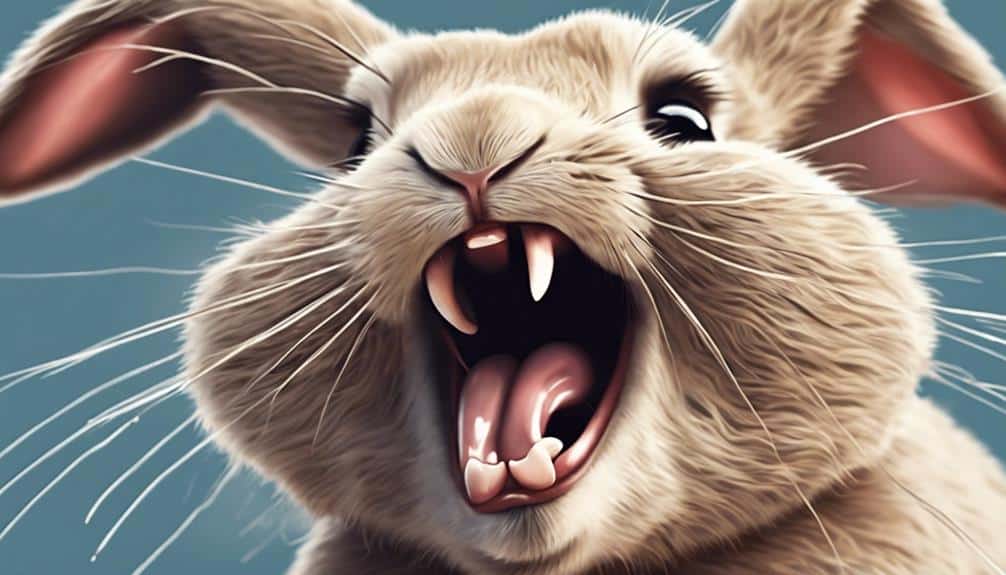
Captivating Bunny Yawn Videos
Exploring enchanting bunny yawn videos provides a fascinating glimpse into the unique behaviors and personalities of rabbits. These videos capture the essence of bunny yawning, showcasing their adorable yet slightly eerie yawning techniques. The yawns aren’t only timely but also reveal a surprising side to these furry creatures. Watching these intriguing bunny yawn videos can evoke a range of emotions, from amusement to fascination and even a touch of bewilderment. Witness the intricate yawning techniques of bunnies, from the initial adorable stretch to the wide-mouthed yawn that follows. Experience the impeccable timing of bunny yawns, often catching viewers off guard with their sudden onset. Observe the varied reactions that bunny yawns elicit, from endearing cuteness to a hint of eeriness, leaving viewers both delighted and intrigued.Understanding Bunny Yawns: Final Thoughts
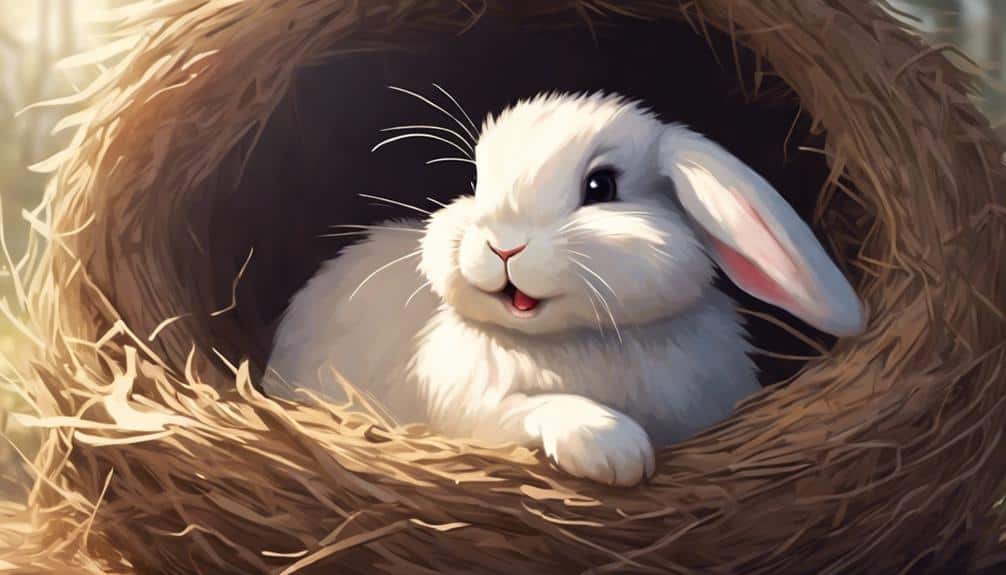
Yawning in Bunnies
Yawning in bunnies reveals intriguing insights into the behavioral patterns of rabbits, shedding light on a fascinating aspect of their actions. Bunny yawns exhibit various patterns, with some rabbits stretching while yawning, and others adding foot movements to the act. The duration of a bunny yawn can vary, from quick and subtle to more prolonged and noticeable yawns. Additionally, the frequency of bunny yawns differs among individual rabbits, some yawning more frequently than others. Witnessing these yawns can evoke a mix of emotions, ranging from endearment at the cuteness of the behavior to a slight eerie feeling due to the visibility of their teeth during the yawn.Reasons Behind Yawns
The behavior of yawning in bunnies serves as a significant indicator of their physiological and social well-being, shedding light on various aspects of rabbit communication and comfort. Yawning triggers in bunnies are often linked to relaxation or sleepiness, aiding in the regulation of body temperature and oxygen levels. Additionally, yawns can serve as a form of communication among rabbits, conveying messages of contentment or signaling relaxation. It’s remarkable that yawns in rabbits can be contagious, leading to a chain reaction within a group of bunnies. Understanding these reasons behind yawning not only provides insights into their well-being and emotional state but also highlights the intricate ways in which bunnies interact and convey comfort through yawn communication and yawn contagion.Is Yawning a Sign of Eye Color Change in Bunnies?
Some people believe that bunnies’ eye color changes are indicated by their yawning. However, this is simply a myth. Yawning in bunnies is a normal behavior and not related to any changes in their eye color. Bunnies’ eye color changes occur as they grow, not during a yawn.

